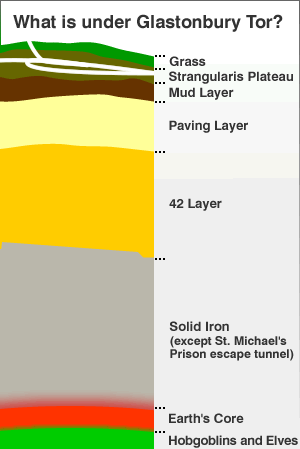For many years scientists have been mystified by the all-male population of Somerset Stranglers – the breed of hamsters native to Glastonbury Tor. The big question has always been how do they reproduce?

Religious teaching has been that they engage in virgin birth, explaining why so many hamsters are depicted in the stained glass windows of churches in Glastonbury.
Historically the scientific community has not challenged this idea out of respect for the hamster’s right to privacy. Local bye-laws make it illegal to film these adorable animals during what might or might not be their mating season.
But the mystery of how Somerset Stranglers reproduce may have finally been answered thanks to recent coppicing of the wooded area on the dangerous north face of the Tor.
Police have received a higher than normal number of reports of a giant creature. Nervous villagers have responded in the traditional way by screaming “Ultrabeast!” as they run home, lock their front door and hide behind the sofa. But a new generation of visitors to Glastonbury have been able to give police a description.
Chief Inspector Wilkinson of the Glastonbury constabulary explains: “Over the last week we have received dozens of calls from ramblers warning of an unexplained creature that roams Glastonbury Tor. Estimates put it at somewhere around twelve feet tall, and bright white in colour. But the clue that makes us think it might be a Somerset Strangler is that so many independent witnesses have described it as having adorably weak forearms. There is only one creature I know of matching that description.”
Wilkinson continues: “The guys in forensics think it may be a rare queen hamster that used to live in the tunnels beneath Glastonbury Tor, and was forced from its natural habitat when the prisoners at St Michael’s Prison dug their escape tunnel and delved too deep. It may now have gone to dwell in the woods on the north face of the Tor, and the coppicing has left it without a home.”
Visitors to Glastonbury Tor should be reassured that there have been no reports of the Ultrabeast attacking humans so it is probably perfectly safe to visit the area. However, if you take a picnic onto the tor you should keep any bags of peanuts double wrapped as they cause aggressive behaviour in male Somerset Stranglers and this could be a hideous problem when scaled up to the proportions of a queen hamster.


